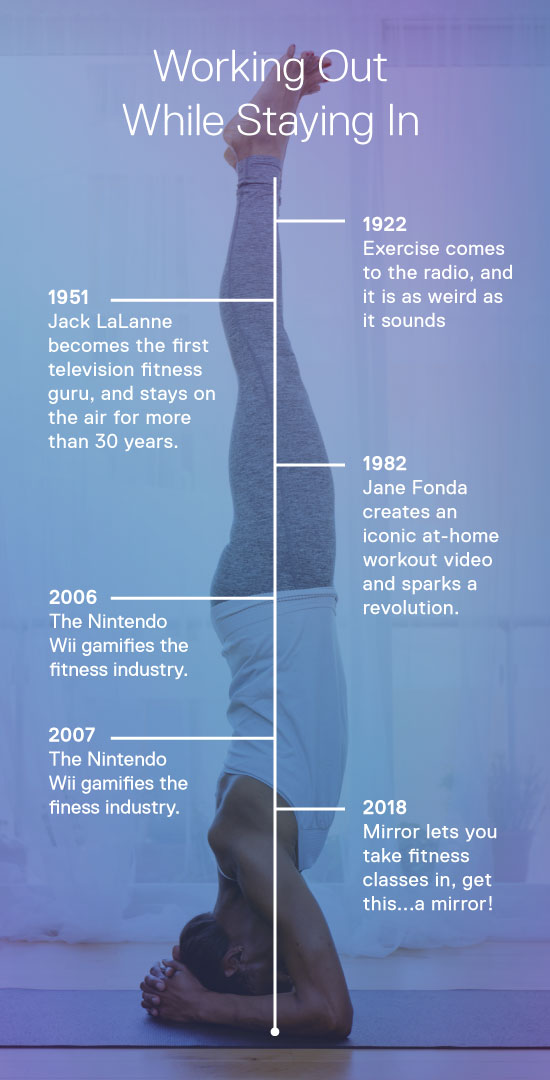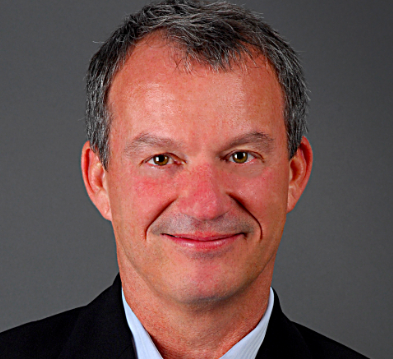Walter Isaacson: The year is 1895 and Oscar Wilde, the famous Irish writer, is trudging away miserably on a machine that looks like a particularly horrible Victorian StairMaster. He’s not doing this to keep in shape. Wilde is serving the two-year prison sentence for indecency, which was code then for homosexuality, and he, along with thousands of other unfortunate criminals, are forced to climb this cruel staircase for hours a day as penance. So if you’ve ever thought of exercise as torture, you’re not entirely wrong.
Walter Isaacson: The treadwheel, as it was called, was invented by a British engineer in 1818 to reform stubborn prisoners. In 1824, prison guard James Hardy wrote triumphantly that it’s “monotonous steadiness, and not its severity, which constitutes its terror and frequently breaks down the obstinate spirit”.
Walter Isaacson: Wilde’s timing was particularly unlucky. The treadwheel was finally abolished a few years later, in 1898. It was a device that nearly killed Oscar Wilde, which is why he would probably be unpleasantly surprised if he’d lived to witness its triumphant return to gyms in 1983 as the shiny new StairMaster. What began as an implement of torture was now something that people were actually doing by choice, proving once again that inspiration sometimes comes from the most unlikely of places.
Walter Isaacson: I’m Walter Isaacson, and you’re listening to Trailblazers, an original podcast from Dell Technologies.
Voice 1: Physical activity can provide excellent release for nervous tensions.
Voice 2: We’re going to need you in top form.
Voice 3 Note the well-developed bodies.
Voice 4: Nearing, and for a time after exercise, the heart pumps much faster.
Voice 5 See how the hips act as a pivot.
Voice 6: Got to get in condition. Conference meets only a month away.
Walter Isaacson: The idea of exercise as we know it goes back to the ancient Greeks. Who knows? Maybe they even had a treadwheel of their own at the first gymnasium, but not everybody wants to go to the gym. Nobody wants to go to a Victorian prison. Fortunately, the dawn of the 20th century brought with it a series of new technologies that help people train in a place where there’s no one to criticize your form or to make fun of just how out of shape you might actually be. Your home.
Walter Isaacson: It’s 1922, and the radio craze is in full swing. New stations are popping up all over North America, and this new technology is suddenly a must-have in every living room across the country. The arrival of commercial radios revolutionized the distribution of news and entertainment, but it also revolutionized the delivery of something else. Exercise.
Walter Isaacson: Donna Halper is professor of communication and media studies at Lesley University.
Donna Halper: Radio loves a good fad just like anybody else does. Somebody comes up with the idea about: Hey, let’s have exercise on the radio. Now, I know what you’re thinking. You’re thinking, exercise on radio? You can’t see it. But it didn’t matter.
Donna Halper: What ended up happening was the radio stations collaborated with newspapers. The newspaper printed the exercises, and the host of the program on radio had the exercises, and played the music, and encouraged people with healthy tips about lifestyle and fitness, and a radio fad was born.
Walter Isaacson: In the early morning of September, 1922, a man named Arthur E. Baird goes on the air at WGI for the first time. He’s broadcasting from a radio station in Medford hillside, several miles outside of Boston. Baird had a show called daily setting up exercises, rift on a fitness trend started by the famed American football coach, Walter Camp. Camp had created a series of equipment-free exercises he dubbed the daily dozen, that people were encouraged to do every morning. Donna Halper.
Donna Halper: The beauty of the setting up exercises on radio was it didn’t have to leave your house. You could just sit there in your little bunny slippers and get up and wait for the friendly voice on the radio and either do your exercises or tell your friends you did your exercises, whichever you prefer. But it was a nice, peaceful, private way to get exercise, and pretty soon, in city after city, you start, as early as 1922, you start seeing radio stations advertising. Listen to us for the morning setting up exercises. Do your daily dozen.
Walter Isaacson: Throughout the 1920s and into the 1930s, countless radio fitness programs hit the airwaves across America, including one sponsored by Metropolitan Life, which built a fancy, state-of-the-art broadcasting studio on the 27th floor of the Metropolitan Tower in New York City, and it hired top musicians to provide live accompaniment for the host.
Walter Isaacson: Eventually, like every craze, the popularity of radio fitness shows began to wane, but those bunny slippers were about to get a whole new way to work out while watching TV. Donna Halper.
Donna Halper: Television comes onto the scene in the late 1940s, and as with early radio, early television is looking for stuff to put on the air, and physical fitness once again has become an interest.
Walter Isaacson: A woman named Paige Palmer in Cleveland was the first person to do an exercise show on TV, wearing heels, fishnet stockings, and full makeup, no less.
Walter Isaacson: But it was a former wrestler, gym owner, and fitness guru by the name of Jack LaLanne who became the most well-known. The Jack LaLanne show started in San Francisco in 1951, and it was picked up for national syndication in 1959 and stayed on the air for more than 30 years.
Donna Halper: He had this great body. He was lithe. He was supple. He jumped around a lot. Think Richard Simmons, only many years earlier, and he starts promoting, not just exercise, but vitamin supplements, and a diet, and juice, and all this other stuff. He basically encouraged people, whatever you’ve got at home, you can use it for this exercise program. You can use a chair. Okay, you can use a table, but basically, his thing was get off the couch and exercise, and pretty soon, just because he had such a great personality… And he was very telegenic. I mean, the camera loved him. Okay? And a lot of people that watched his TV show, they were stay-at-home moms so this turned out to be a niche audience that he could appeal to and he absolutely was beloved.
Walter Isaacson: By the time LaLanne’s show went off the air in 1985, another fitness guru had emerged. She popularized her message to a different medium, a handy little thing called a VCR. Her name, Jane Fonda. In the early 1980s, Fonda, a well known Hollywood actress and political activist, owned a successful workout studio in Beverly Hills and she had written the Jane Fonda Workout Book. When a producer asked her to make a video of the exercises in that book, she refused because she thought it would be bad for her image. But eventually she gave in.
Walter Isaacson: She wrote the script on her hotel room floor during a Christmas skiing vacation. She just used teachers and clients from her studio in the video. They rehearsed for a few days and shot it with one camera. Fonda figured the whole thing was no big deal. She was wrong. Her now iconic at-home fitness video titled, “Workout Starring Jane Fonda,” came out in 1982. Donna Halper.
Donna Halper: This was massive. You could put on the tape, you could watch her doing the exercises, then you could emulate them. It was really inspiring and it got around the problem of a lot of women not just not having a gym to go to, but a lot of women being shy about going to the gym. If you were a little overweight or if you didn’t look like Jane Fonda, you didn’t necessarily want to go to the gym.
Walter Isaacson: Fonda went on to record 23 videos and spawned a host of imitators, including Cher, Cindy Crawford and Heather Locklear. Workout Starring Jane Fonda is still the best-selling workout video of all time. More than 17 million copies have been sold worldwide and some argue that Jane Fonda’s tapes actually drove the initial sales of VHS machines. The public was now used to working out in front of their televisions, a habit that decades later would pave the way for the next wave of screen-based fitness technology. But this time, you didn’t just watch a screen while you worked out. The screen also watched you.
Walter Isaacson: It’s a few hours before midnight on November 18, 2006 in New York City. 3,000 people are lined up around the block under the neon lights and giant billboards of Times Square. They’re waiting to get their hands on one of the most revolutionary new consoles in video game history. They’re waiting for the launch of the Nintendo Wii. But the Wii wasn’t just going to revolutionize the gaming industry. It was also destined to revolutionize fitness.
Walter Isaacson: How exactly was a Nintendo Wii different from the other gaming consoles that came before it? All gaming systems of course require the user to hold the controller and so does the Wii, but the Wii is different because its controller contains sensor technology that can detect motion and rotation in three dimensions. Brad Millington is the author of Fitness, Technology and Society: Amusing Ourselves to Life.
Brad Millington: Instead of pushing a series of buttons, if you want your avatar on screen in a game like Wii tennis to swing his or her racket, then you act out the swing in the living room. Same thing in Wii golf, you actually physically do the swing. It’s this kind of first person active style of gaming, right? Or it’s an exergame, which is to say it brings exercise and gaming together.
Walter Isaacson: Nintendo took this new kind of gaming experience up several notches over the subsequent years with their later releases of Wii Fit. The Wii Fit was a fitness game that came with a balance board and there was the Wii Fit Plus which added even more activities. Rivals like Sony and Microsoft have also since joined the exergaming party with their own consoles that come with motion detection sensors so the players can be in the game. If you’ve never heard of Just Dance, just ask the nearest nine year old. But Millington thinks the most important thing that the Wii did was lay the groundwork for a change in people’s thinking about the relationship between screens and wellness.
Brad Millington: There’s this concern about video games and other technologies, right? That they’re actually kind of a barrier to healthy living. The Wii and Wii Fit aim to turn that notion on its head, right? Suddenly these devices become allies in the quest or at least are pitched as such. They become allies in the quest for healthy living in the sense that we can do the pleasurable thing, the enjoyable thing of playing video games but also get our heart rate up at the same time maybe.
Walter Isaacson: It’s probably good that the fitness world no longer thinks of screens as the ultimate evil because many of the most innovative new pieces of equipment are based on them. Today, the screens we’re incorporating into our fitness regimes are getting smaller and doing even more and you don’t need to be at home to use them.
Walter Isaacson: Fitbit is an industry leader in wearable fitness technology. Created in 2007, their digital wristbands and watches monitor your real-time activity and record biometric data like your heart rate, how many calories you burn and your quality of sleep. You can even input fitness goals and compete against other Fitbit users. Fitbit has created an entire fitness community around its product. But the biggest game changer for Fitbit might be its simplest feature, a feature that helped gamify personal fitness in a whole new way, the step count. Kevin Pereau is the author of the Digital Health Revolution.
Kevin Pereau: I think that they have taught us a little bit about gamification. Previously, I think if you had asked somebody about gamification, they would’ve thought, “Well, why don’t you and I have a contest with one another and see who can walk the most steps.” And I think what Fitbit figured out was we really compete against ourselves. If we did 8,000 steps today, maybe 8,200 or 8,400 is what we strive for tomorrow.
Walter Isaacson: But Fitbit is not just about counting steps and calories. Kevin Pereau believes it’s changed the way people think about personal fitness and created a whole new level of engagement with tracking biometrics.
Kevin Pereau: We have a saying in digital health anyways, and that’s that you can’t manage what you don’t measure. And I think Fitbit was one of the early pioneers of attuning us to the fact that we can measure many key features about ourselves that affect our health in an overall way and it’s pretty seamless, easy and fun.
Walter Isaacson: Fitbit helped create an entire industry of wearable fitness gadgets. Today, you can buy swimming goggles that give you real time information about how well you’re swimming, and there’s even athletic clothing that can measure the peak performance of athletes when they’re training on the field or in the weight room. Fitbit, and those other performance trackers, helped spawn the first wave of the digital fitness revolution. The first wave was all about generating data. Today, Fitbit has sold more than a hundred million devices and boasts more than 27 million active users worldwide. That’s a lot of data.
Walter Isaacson: So, the real question is, what does Fitbit do with all this data and how do they make sense of it? We’re now in the second wave of digital fitness.
Kevin Pereau: I think in digital health 2.0, what happened was, we realized while we’re sitting on a mountain of data that we’re not really doing anything with. Big data and quantified self were the big buzzwords, I think, from 2014 to 2018, but even then the smartest people in the room were looking backwards and saying, “Hey, I can tell you what just happened and I can tell you why.” But I think, really, where we’re at right now is we’re on the cusp of taking all that data and making it actionable practically the minute that you capture the data.
Walter Isaacson: So, the next wave of digital fitness is to make use of that data the moment it’s generated, so we can make better decisions more quickly. But these insights aren’t limited to your workout routine. They have multiple healthcare applications beyond the fitness industry. In November 2019, Google bought Fitbit for $2.1 billion. It’s their goal to figure out a way to make all of this data actionable. Kevin Pereau.
Kevin Pereau: I think Google’s probably going to take the bull by the horns here and better target populations of health. What if you’re a diabetic and you have blood sugars that are trending in a dangerous direction over a sustained period of time? You would want to call in to play an Invoca, an activator to connect you to a clinician, maybe somebody in your social network who cares a bit about you. A nutritionist. Even a fitness instructor, a cadre of stakeholders who can look at the data, make sense of it, and help you take action on it right now to get you to a better outcome.
Walter Isaacson: It’s yet to be seen what Google will do with all of this data being generated by Fitbit users, but it’s clear that being able to examine the relationship between things like heart rate, stress levels, and diet could provide anyone with valuable real-time health insights. One thing is certain, as the cult of popularity of Fitbit grows, so will the data we produce.
Walter Isaacson: There’s another American company that’s developing a cult of its own, and it’s one that comes with its own ready-made incantation, “Mirror, mirror on the wall, who’s the fittest of them all?” Brynn Putnam is a former professional ballet dancer and the owner of Refine Method, a small chain of boutique gems in New York. Putnam had happily spent her life schlepping to one workout space or another, but that all changed when she got pregnant with her son in 2016.
Walter Isaacson: Suddenly, she found yourself in the strange position of being a gym owner who couldn’t face getting to her own gym. Fitness now had to be something that she did at home. But there was no room for exercise equipment in her apartment, and when she tried to stream workout classes, she couldn’t find a way to position her laptop so she could actually see it while she was moving. Then one night she was sitting at her kitchen table going over the results of a member survey about upgrades she’d recently made at her own gyms.
Brynn Putnam: We had added new instructors, new classes, new pieces of original fitness equipment, and we had also added mirrors and our members said, “Far and away, the mirrors were the best upgrade we had made all year,” and I realized that the mirror was really the way to bring the essentials of a good studio workout variety, personalization and community to the most convenient place: your home. And from there, Mirror was born.
Walter Isaacson: Putnam and her husband, an engineer, cobbled together the first Mirror prototype at their kitchen table with a basic computer, a tablet, and a piece of one-way glass, then they flipped the switch to test to see if it worked.
Brynn Putnam: The very first thing that I saw on my Mirror was the sentence, “This is a test,” in white letters and I saw that you could experience both your own reflection and content transmitted in a way that was really magical.
Walter Isaacson: What Putnam envisioned eventually became a very chic 52-inch rectangular portal that gave access to a wide variety of live-streamed and on demand fitness classes. Mirror costs $1,500 and it comes with a Bluetooth heart rate monitor. The whole thing can be mounted on or leaned against a wall. Customers also pay a monthly fee to subscribe to classes from the Glossy Mirror headquarters in New York. When Mirror is in use, you see your own body and a shrunken image of the class instructor. And when it’s not, it’s just a mirror.
Walter Isaacson: It’s controlled by an app to avoid grubby fingerprints, and so you can interact with other people in your class. You can’t see each other, but you can send emojis and digital high fives. Since Mirror launched in September 2018, it’s amassed a legion of celebrity fans, including Reese Witherspoon, Ellen DeGeneres, Gwenyth Paltrow and Jennifer Aniston, but it was singer Alicia Keys who really put Mirror on the map when a video of her getting one for Christmas in 2018 went viral. Brynn Putnam.
Brynn Putnam: I was sitting in the living room at my in-law’s Christmas day and I heard a squeal from the other room and my cousin came running in holding her phone and she showed me a video, and it was a video of Alicia Keys being surprised by her family with the gift of a Mirror. And Alicia Keys let out probably the largest squeal I’ve ever heard because she was just so excited that her family had given her the gift of Mirror for the holidays. And that was the moment that I realized we really were onto something.
Walter Isaacson: Mirror has since sold tens of thousands of units and now also offers remote one-on-one personal training.
Brynn Putnam: I think in the near future you’re going to be able to experience broader wellness content. Things like rehabilitation or physical therapy, and from there, there’s so much opportunity for us, be it styling sessions with your own personal stylist, a beauty tutorial to find the perfect shade of lipstick, or an eyeglass fitting so that you can get your eyes checked without leaving your home. And so, we’re really excited about any type of experience, work, convenience, privacy, community, and immersion really makes sense.
Walter Isaacson: Therapist, eye doctor, personal trainer, fashionista, makeup artists. That’s an impressive list of potential jobs for a product that was originally intended to be used for a yoga class. But what if home fitness didn’t involve breaking a sweat? Or for that matter, even getting off the couch? What if instead of moving your body, you could simply take a pill? That’s what biologist, Tim Willson, began asking in the late 90s when he had the idea to create something that might just change the future of fitness forever. It’s called Compound 516. Tim Willson.
Tim Willson: At the time, I led a laboratory at the pharmaceutical company that’s now GlaxoSmithKline. My background training is as a chemist and what my laboratory did was we used chemistry to try and study the role of different proteins to understand whether they could be interesting drug targets for treatment of different human diseases.
Walter Isaacson: Willson’s lab was given the task of finding chemicals that could bind to a mysterious orphan receptor in the body called PPAR Delta. It’s mysterious because at the time, scientists knew that PPAR Delta existed, but they didn’t know which hormone it was receptive for. It had already been shown that compounds that bound to a similar receptor were extremely effective for treating diabetics. So the race to find the next blockbuster drug was on.
Tim Willson: What was fascinating about PPAR Delta is it’s a hormone, turns out to be fatty acid, so basically the fat that you eat in your diet. We discovered that not only are the hormone receptors for steroids, but there’s also hormone receptors for dietary fat.
Walter Isaacson: A drug that targets body fat? Now that would be a bestseller. Willson’s team created a potent synthetic hormone, Compound 516, to see if PPAR Delta would come out and play. They tested 516 on mice and on a colony of chubby middle-aged monkeys. The initial results were exciting. Compound 516 lowered insulin levels and triglycerides, kickstarted a dramatic increase in HDL, the good cholesterol, and decreased LDL, the bad cholesterol. But it was when they tested it on isolated muscle cells that its true potential was discovered.
Tim Willson: We would make the cells change the fuel source that the cells would use. The cells would switch from using glucose as their primary source of energy to switching to using fatty acids as their primary source of energy. That was really the aha moment when we started to understand what activation of PPAR Delta was doing.
Walter Isaacson: And what it was doing was training for a marathon. The compound was mimicking some of the known effects of endurance training. Lazy cells were getting fit, and they never even had to go to a gym. Sound too good to be true? It was. GlaxoSmithKline abruptly halted trials in 2007 after it was discovered that it caused cancer in mice.
Walter Isaacson: But Willson didn’t want all of their work to go to waste, so he published their findings in the hopes that other scientists would pick up the baton. And they did. Work on the compound continues to this day. Tim Willson says that if an exercise bill does come on the market one day, he’s not sure he would take it because; one, it would feel like cheating, and two, because it just wouldn’t be any fun.
Tim Willson: For me personally, the enjoyment is actually doing the training. I would see no advantage in trying to take the shortcut of using a pill to try and do what you’re actually getting enjoyment from, which is the training.
Walter Isaacson: It’s also hard to imagine the uses of Wii Fit, Fitbit, Mirror, completely giving up the sense of community, the joy they experience when exercising and instead just pop a pill. It’s that pursuit, the pursuit of good old-fashioned fun that will probably do more to keep humankind fit than any particular technology ever will.
Walter Isaacson: I’m Walter Isaacson, and you’ve been listening to Trailblazers, an original podcast from Dell Technologies. For more information on any of our guests, go to our website, delltechnologies.com/trailblazers. Thanks for listening, and stay healthy.
 Since the beginning, it’s been a generally accepted guideline that if you want a good, productive workout, you need to hit the gym.
Since the beginning, it’s been a generally accepted guideline that if you want a good, productive workout, you need to hit the gym. Brad Millington
is an associate professor at the University of Bath and the author of Fitness, Technology and Society: Amusing Ourselves to Life.
Brad Millington
is an associate professor at the University of Bath and the author of Fitness, Technology and Society: Amusing Ourselves to Life.
 Brynn Putnam
is the founder and CEO of MIRROR, a fitness technology company that launched a full-body mirror that streams fitness classes.
Brynn Putnam
is the founder and CEO of MIRROR, a fitness technology company that launched a full-body mirror that streams fitness classes.
 Donna Halper
is a professor of media studies and communication at Lesley University and the author of Invisible Stars: A Social History of Women in American Broadcasting.
Donna Halper
is a professor of media studies and communication at Lesley University and the author of Invisible Stars: A Social History of Women in American Broadcasting.
 Tim Willson
is a professor at the University of North Carolina Eshelman School of Pharmacy and invented a synthetic hormone that mimics the effects of endurance training on muscle cells.
Tim Willson
is a professor at the University of North Carolina Eshelman School of Pharmacy and invented a synthetic hormone that mimics the effects of endurance training on muscle cells.
 Kevin Pereau
is a leading digital health expert, the founder of TranscendIT Health and author of The Digital Health Revolution.
Kevin Pereau
is a leading digital health expert, the founder of TranscendIT Health and author of The Digital Health Revolution.